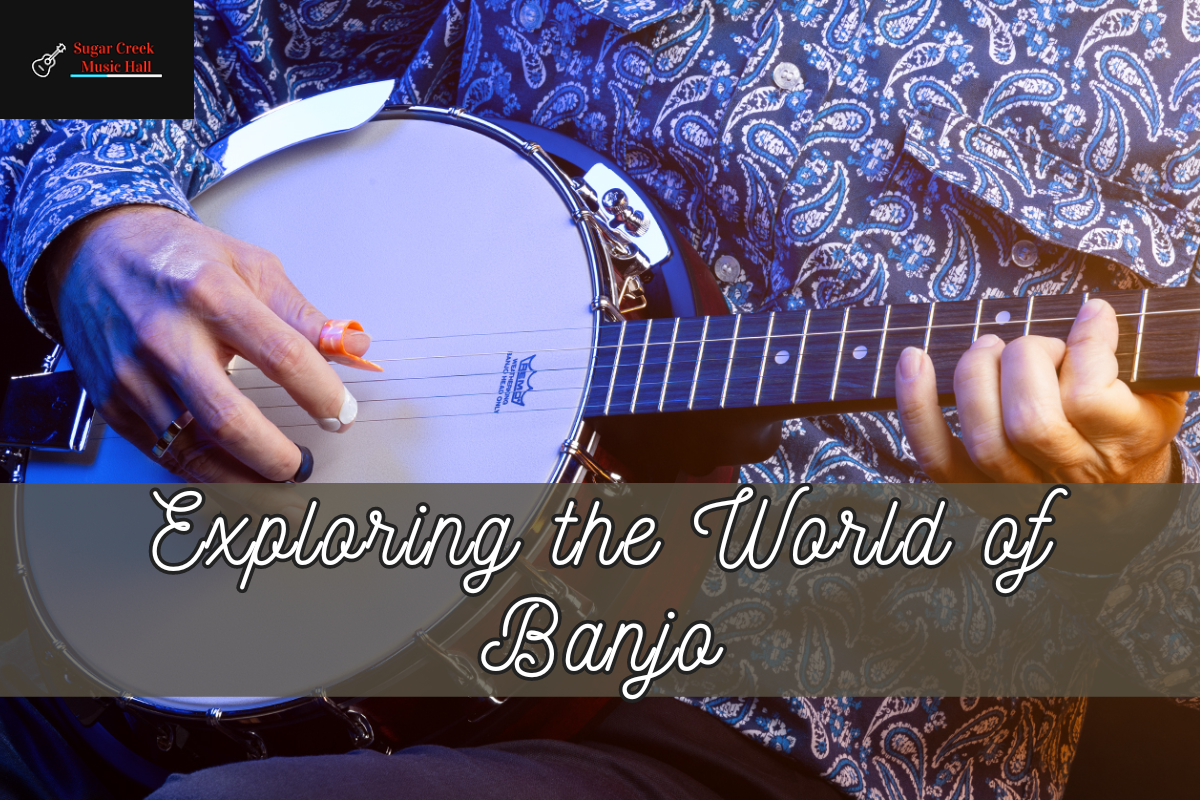Exploring the World of Banjo: Slaves from Africa came to the United States and played the banjo for the first time a few hundred years ago. The idea came from instruments from Africa. One possibility is that the name banjo comes from the Kimbundu word mbanza.
Another is that it comes from a Senegambian word for the bamboo stick that is used for the neck of the banjo. There are different types of modern banjos, some with four strings and some with five.
A six-string version that is tuned and played like a guitar has become more popular. People who play the banjo usually pluck the strings quickly and in arpeggiated patterns, but there are many other styles of playing as well.
History of the banjo
- Cecelia Conway wrote in 1995. From the University of Tennessee Press comes African Banjo Echoes in Appalachia: A Study of Folk Traditions. ISSN 0-87049-893-2 for paper; ISSN 0-87049-892-4 for cloth. A look at how African Americans have affected banjo playing in the United States over the years.
- Philip F. Gura and James F. Bollman (1999). During the 1800s, the banjo was America’s instrument. Item number 0-8078-2484-4 from The University of North Carolina Press.
- The complete history of the banjo, with a focus on how it changed during the 1800s. Katonah Museum of Art (2003). How the banjo came to be. In Katonah, New York, at the Katonah Museum of Art. ISBN 0-915171-64-3.
- Karen Linn wrote in 1994. That Half-Barbaric Twang: The Banjo in Popular Culture in the United States. ISBN 0-252-06433-X from University of Illinois Press. Deep cultural history of the banjo, with a focus on how its image has changed over time.
- In 1984, Tsumura, Akira. The Tsumura Collection of Banjos. ISBN 0-87011-605-3 from Kodansha International Ltd. The best collection of pictures ever made of the history of the banjo.
- Robert Lloyd Webb (1996). The second edition of Ring the Banjar! ISBN: 978-1-57424-016-1. Published by Centerstream. There is a short history of the banjo and pictures from an MIT Museum show.
Video lessons (5-string banjo)
- Jay Bailey. “Historical Origin and Stylistic Development of the Five-String Banjo.” That was in The Journal of American Folklore 85.335 (1972): 58–65.
- Price, Patrick Costello (2003). How to Play the Old-Time Banjo and How to Play It Right. ISBN: 0-9744190-0-1. Published by Pik-Ware. How to learn how to fret the banjo. Several websites, such as ezfolk, offer it for free under a Creative Commons licence. It was saved as a permalink on November 17, 2007.
- “Earl Scruggs and the 5-String Banjo” by Earl Scruggs. The Hal Leonard Company. ISBN 0-634-06042-2. How to play the 5 string banjo in the Scruggs or 3 finger style.
- “Old-Time Banjo Styles” by Seeger, Mike (2005). Tapes made at home. Seeger teaches many old-fashioned ways to pick the guitar, such as clawhammer, two-finger, three-finger, up-picking, and more.
- Pete Seeger wrote in 1969. How to Play the Banjo with Five Strings. Printed in 2003. The company that sells music. ISBN 0-8256-0024-3. The important instruction book that is still being sold after many years. Seeger has made a video with instructions that you can get on DVD since then.
- The 1985 DVD by Wernick, Pete. Learn how to play bluegrass banjo. Full course on how to do things in the Scruggs style.
- Pete Wernick and Tony Trischka (2000). The best at playing the five-string banjo. The Acutab Publications. ISBN 0-7866-5939-4. 70 banjo songs by artists like Scruggs, Reno, Osborne, Crowe, Fleck, Munde, and Cloud. How to play, improvising, setting up, learning, backing up, favourite banjos, practise tips and gear.
- Robert Winans, “The Folk, the Stage, and the Five-String Banjo in the Nineteenth Century.” The Journal of American Folklore 89. 354 (1976): 407–37. 14 September 2006.
To teach (Tenor Banjo)
- Mel Bay (1990). Full Tenor Banjo Method. Book by Porcupine Press. ISBN 978-1-5622-018-7. A guide for instructions.
- Mel Bay (1973). An in-depth guide to tenor banjo chords. ISBN 0-87166-877-7 from Porcupine Press. A full list of chords that can be used with CGDA or standard tuning.
- You, Gerry O’Connor. Fifty solos for Irish tenor banjo: jigs, reels, and hornpipes set up for E, A, D, G, and A, D, G, C tunings. ISBN 978-1857201482 for Soodlum by Waltons Mfg. Ltd.
- Tobe A. Richards (2006). There are 1,728 chords in CGDA Standard Jazz Tuning in The Tenor Banjo Chord Bible. Item number 0-9553944-4-9 from Cabot Books. A complete list of chords in standard jazz tuning.
- Tobe A. Richards (2006). The Irish Tenor Banjo Chord Bible: 1,728 Chords in GDAE Irish Tuning. ISBN 0-9553944-6-5 from Cabot Books. An in-depth guide to chords in Irish tuning.
- Bud Wachter (2005). Picking up the tenor banjo. It has the ISBN number 1-59773-078-5. A guide for instructions.
How to Play the Plectrum Banjo
Tobe A. Richards (2007). If you play the plectrum banjo, this book has 1,728 chords in CGBD standard tuning. Books from Cabot. ISBN 978-1-906207-07-6. A complete list of chords in standard tuning.
If you like this Article about Exploring the World of Banjo please share this Article with your friends and family members.
